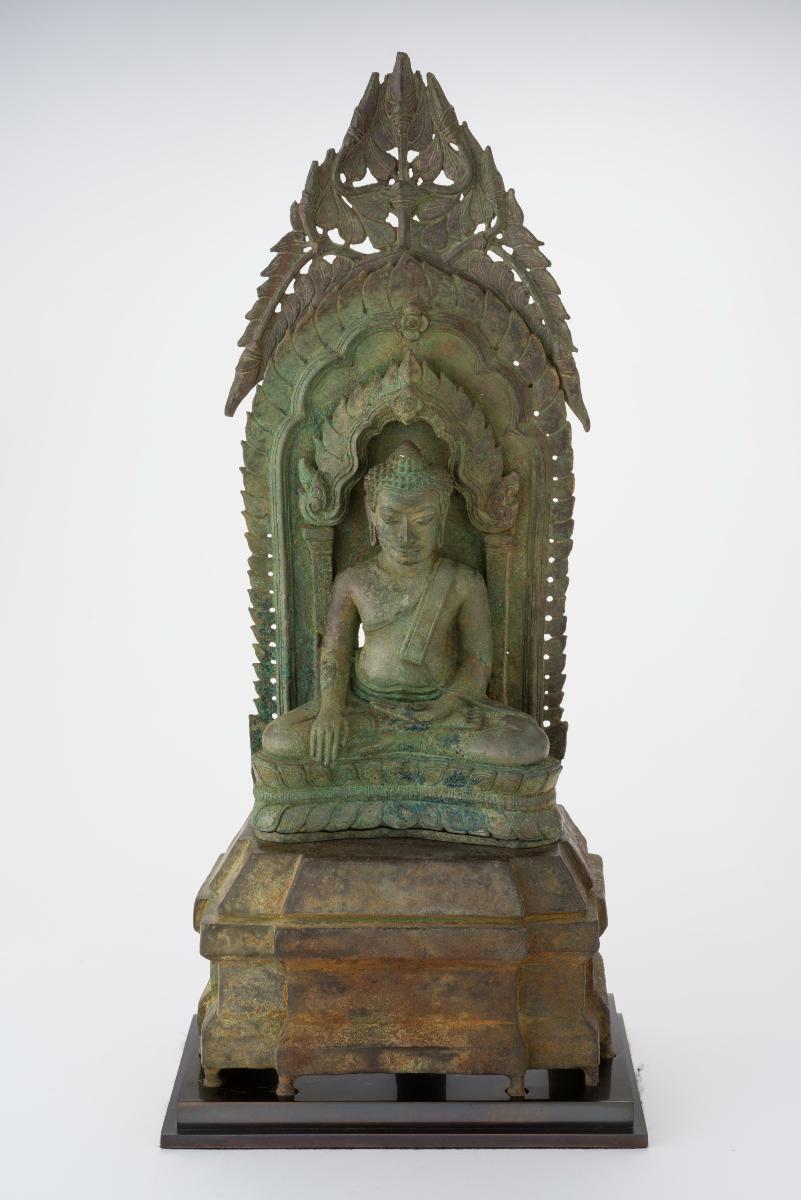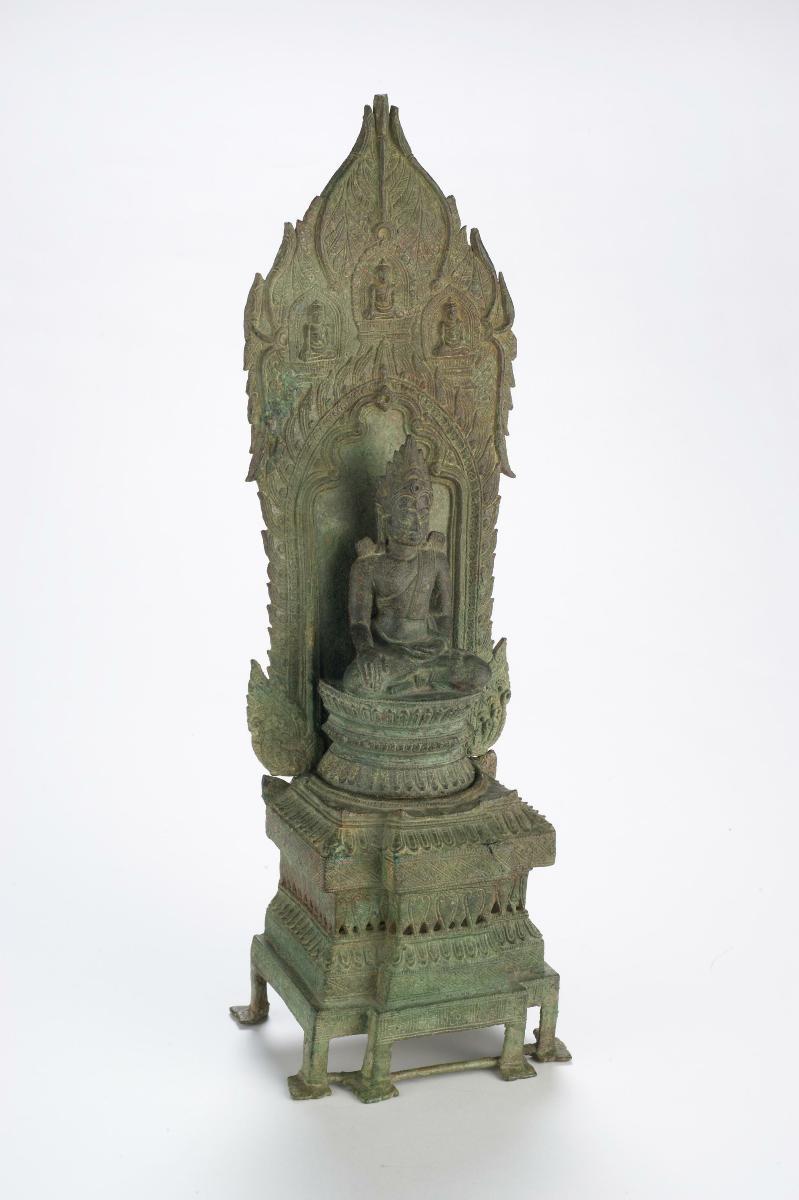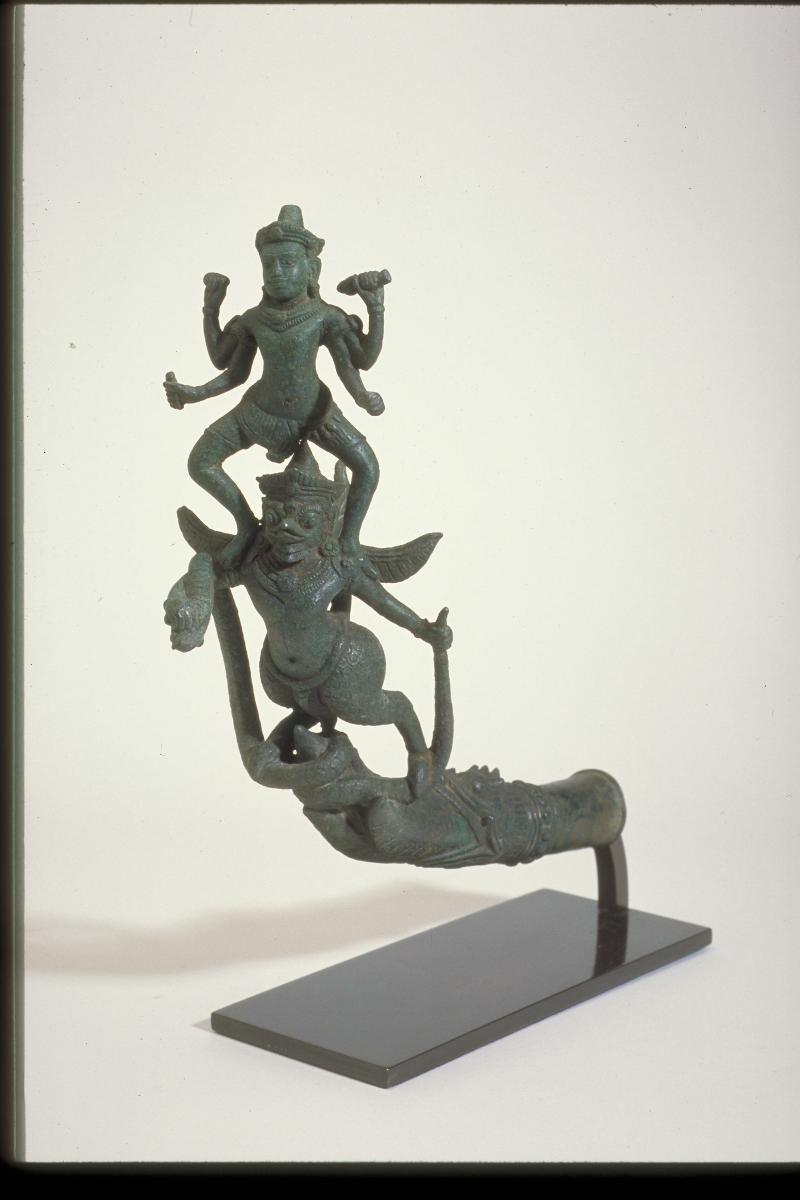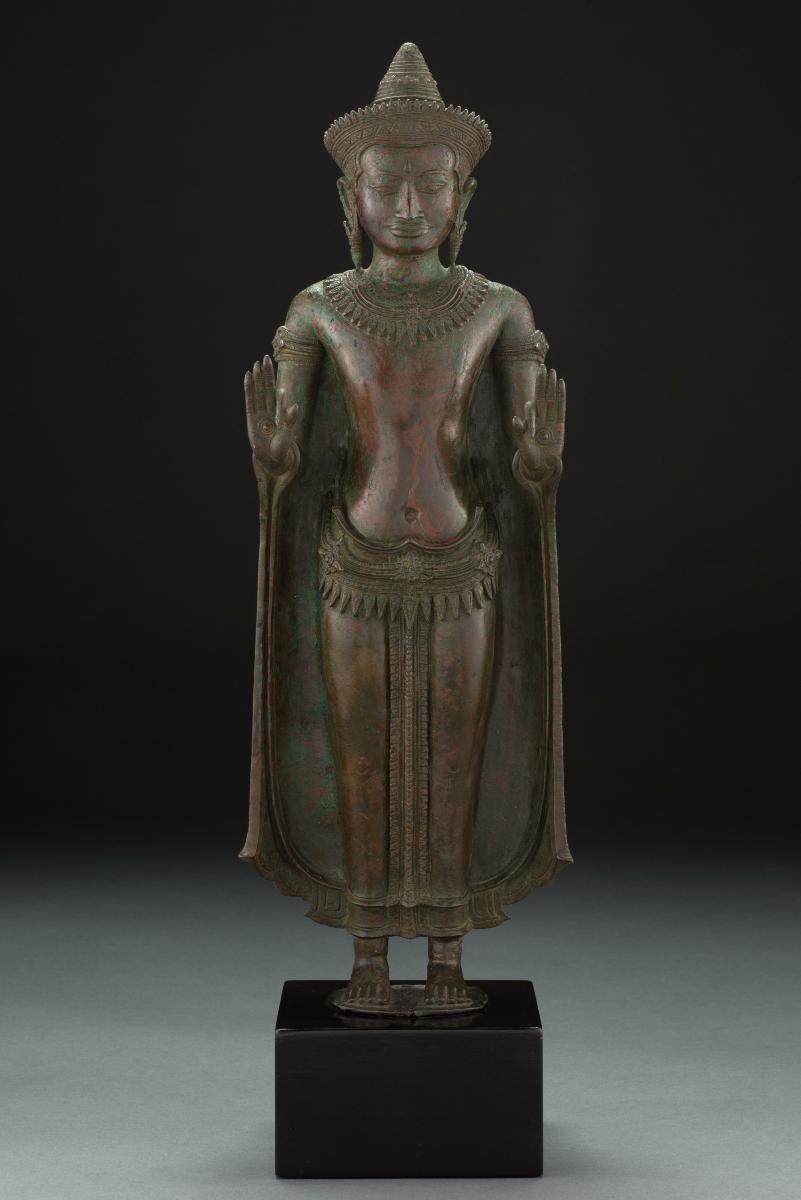This Lopburi period Buddha is shown seated on a double lotus throne which is supported in turn by a larger rectangular pedestal. Rising above the Buddha’s head, a row of flames forms an arch supported by two slender columns and crowned by a lotus blossom. This arch is enclosed within an outer nimbus of flames surmounted by leafy stems suggestive of the Bodhi tree. The Buddha’s right hand is in the earth-touching bhumisparsa mudra, calling the Earth to witness his triumph over temptation. He wears a simple monastic robe that leaves the right shoulder bare. The Lopburi Period is named after the eponymous town in central Thailand from which the Khmer ruled the region from the eleventh to thirteenth centuries. The art style is consequently a fusion of local tastes and sensibilities with incoming Khmer aesthetics. As much of northeast and central Thailand came under the control of Angkor during the eleventh century, Khmer influence began to dominant the art style. However, during the reigns of King Suryavarman II (1113 – c. 1145 AD) and Jayavarman VII (1181 – c. 1218 AD) it flourished and began to excel in terms of technical excellence and inventiveness of design and iconography.















